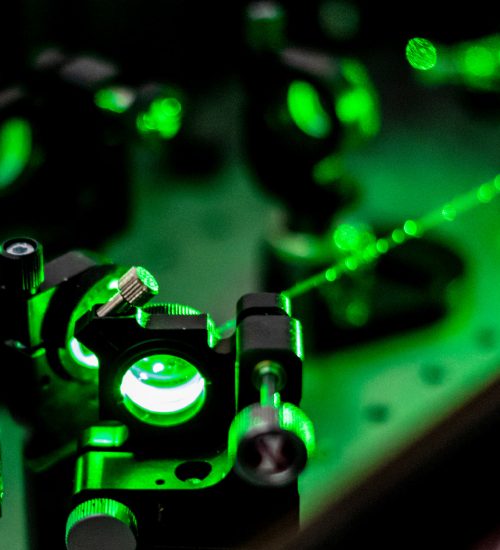Laser Ultrasonic Testing
Laser ultrasonic testing (LUT) combines the sensitivity of ultrasonic inspection with the flexibility of optical systems to meet complex inspection challenges.
LUT offers distinct advantages for testing metals, composite materials, ceramics, and liquids:
- Remotely and rapidly inspect curved surfaces on fixed or moving parts.
- Measure parts in hostile environments.
- Work at temperatures well above those that can be tolerated by other instruments.
The accuracy and flexibility of LUT have made it an attractive new option in the non-destructive testing market. Some applications include:
- Wall thickness measurement of seamless steel tubes
- Inspection of composite components
- Evaluation of adhesive bonds
- Weld inspection

How Does It Work?
LUT systems first generate ultrasonic waves from a pulsed laser. The laser pulse strikes the component, generating ultrasonic waves through a thermoelastic process or by ablation. Laser pulses can generate the full complement of waves (longitudinal, shear, surface, and plate). These waves interrogate a feature of interest in the interior or surface of the component and then propagate to the surface position of the detection laser beam.
The resulting surface displacement is measured with the laser ultrasonic receiver. The measured signal is then processed to yield and display the required information. As with conventional UT, measurements can be performed in pulse-echo, through-transmission, and pitch-catch configurations.
Broad Uses of Laser Ultrasonic Testing
Laser UT is fast and effective on rough surfaces. It can function effectively in a factory environment. It is ideally suited for many applications that are beyond the capabilities of conventional ultrasonic testing. The applications span three broad areas:
- Process monitoring: measurements early in an industrial process on parts that are hot and/or moving at high speed.
- Post-process evaluation: high-resolution inspection of small parts; fast areal scans of large components or structures.
- In-service inspection: inspection of complex structures (turbine blades); inspection under hazardous conditions (in nuclear power plants); fast scanning of safety-critical oil and gas pipelines.
Contact Us
Fill out the form below for commercial inquiries or to learn more about our technologies and capabilities.
